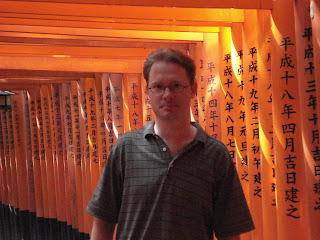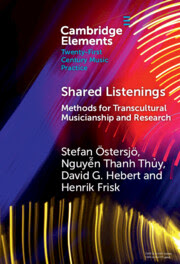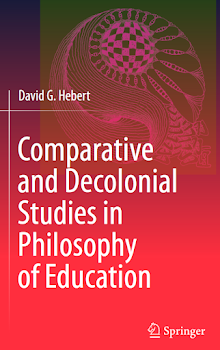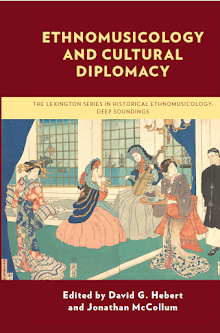Schools throughout much of the world offer music instruction, and wind bands have tended to be among the most popular instrumental ensembles in educational settings. Wind bands have also long played an important role in military, governmental, industrial, and religious institutions. Nevertheless, the relevance of wind bands in the contemporary world is an important question that seems inadequately explored.
Wind bands have certain educational advantages, yet probably cannot alone suffice as a comprehensive form of music education. Still, wind bands (broadly defined) may have greater relevance than most would realize, since the global phenomenon of wind band fusions has received inadequate scholarly attention and many schools tend to subscribe to a very narrow definition of the genre.
Research on bands in various cultures also provides important insights into the processes of hybridity and transculturation in music. It seems possible that as much can be learned about a culture from the way it modifies and adapts to newly introduced styles as from studies of its own long-standing traditions. Certainly the role of competition in Japanese bands, and the role of religion in Maori and Tongan bands, are demonstrative of fundamental values within these cultures, as is the role of rhythm, dance and improvisation in the other ensembles shown further below.
My research in this area contributes to the growing body of scholarship that seeks to attain a more comprehensive global understanding of wind bands. Other scholars addressing related topics include Trevor Herbert, Rob Boonzajer Flaes, Kate Brucher, Suzel Reily, Shuhei Hosokawa, Kanichi Abe, Bernhard Habla, and Richard Scott Cohen.
Japanese Wind Bands
What is important about Japanese wind bands?:
(1) The All-Japan Band Association national competition is the largest music contest of any kind in the world, with nearly 500,000 contestants.
(2) The world's leading professional civilian wind ensembles are based in Japan, most notably the Tokyo Kosei Wind Orchestra and the Osaka Municipal Symphonic Band. These ensembles have ticket sales and recording outputs that resemble major symphony orchestras.
(3) In just a few years, young Japanese band students learn to perform at virtually a professional level. This is remarkable considering the relatively short history of bands in Japan.
(4) Japanese composers have produced a unique body of original band works that fuse Japanese and European influences. Many of these works are of an outstanding quality and have received little attention outside Japan.
(5) Bands are the oldest form of western instrumental music ensemble in Japan.
I first began researching Japanese wind bands about ten years ago and my book will finally be published in the coming year.
Here is a video clip of a Singaporean band performing an original piece by Japanese composer Bin Kaneda. Kaneda was a close friend of Hiroshi Hoshina and a teacher of Toshio Mashima, both of whom are also regarded as important Japanese wind band composers:
Here is a video clip of some interesting images of Africa accompanied by the Tokyo Kosei Wind Orchestra’s performance of Van McCoy's "African Symphony." The Tokyo Kosei Wind Orchestra is considered an important professional model for wind bands throughout Japan, and is very highly regarded internationally as well:
Here is another clip of the Tokyo Kosei Wind Orchestra performing in a nationally televised awards event:
Most Japanese wind bands play thorough-composed music under the guidance of a conductor, but here is a video clip of an especially interesting professional band called Tokyo Brass Style (which has developed from embellishing the Japanese school band tradition in fusion with global popular music styles, such as salsa). They are playing a song that was recently popularized in the Dragon Ball anime series, Maka Fushigi Adventure:
Here is a video of the Do-Re-Mi Nursery School Marching Band:
-
Japanese middle school band (12&13-year olds), 2011 contest: start at 4:00
Japanese high school band playing piece by Toshio Mashima: start from 5:10
Japanese middle school band on Japanese band piece:
Japanese news story on school band contests:
Here is a video of another intriguing (but less musically compelling) wind band and Japanese culture fusion that occured outside Japan: It is a live performance of the recent pop hit “Hollaback Girl”, which combines hip-hop with a marching band (playing on Yamaha gear), accompanied by
***************************************
Maori Ratana Bands
New Zealand's Maori Ratana bands are a unique tradition that developed within the largest political and religious movement among Maori. Using an ethnographic approach, I studied the social history of these bands during 2006. The research took me to the religion's headquarters and even to Japan, where an important meeting had occurred between Japanese and Maori Ratana musicians in 1924.
Here are video clips of some Maori Ratana bands:
***************************************
Tongan Brass Bands
Tongan brass bands are another unique tradition that fuses European and Polynesian influences. I studied a Tongan band in Auckland, New Zealand to see how this tradition was adapted into the migrant urban context.
Here is a video clip of the Royal Hifofuoa Tongan Brass Band:
Here is a video clip of the Tongan Police Brass Band:
***************************************
As sociomusicologist Charles Keil has demonstrated, bands that are organized on democratic principles, that emphasize rhythmic "groove", and provide opportunities for improvisation, composition, and arranging offer great potential for creative and meaningful lifelong participation in music. Brass bands have also played an important role in the development of many popular music styles (reggae, ska, jazz, salsa), and brass samples are even used in hip hop.
The following video clips of a New Orleans Mardi Gras band followed by Balkan, Romani, Pakistani, Thai and West African bands illustrate this point:
Mardi Gras Street Band (USA):
Balkan Brass Band:
Romani Brass Band:
Gengbe' Brass Band of Benin:
Seun Kuti & Egypt 80 brass section (Nigeria)
Bjork: Overture from "Dancer in the Dark":

























